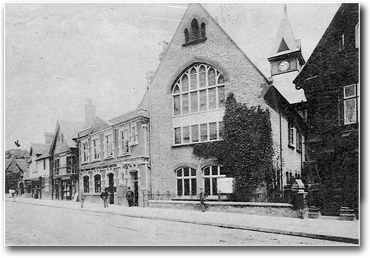Loughton is in the district of Epping Forest, a part of England where history runs deep. Within the present parish of Loughton are three villages mentioned in the Domesday Book of 1086 – Lukintune (Loughton), Tippendene (Debden) and Alrewarton (Alderton). Loughton grew because in 1615 a road was built northwards which became the main route from London to Newmarket and Cambridge. By 1730, this road was turnpiked, and inns, smithies and shops grew up to cater for travellers. In 1856, the railway arrived; it became possible to live among the woods and hills of Loughton and work each day in London.
Lopping HallMany famous people have been associated with or lived in Loughton; for instance, Ben Jonson, Lady Mary Wroth, Rudyard Kipling, writers Arthur Morrison, W.W. Jacobs, Hesba Stretton, Sarah Flower Adams, lexicographer Robert Hunter, sculptor Jacob Epstein and actor Alan Davies.
Loughton includes three conservation areas on the forest edge to the west of the town. There are 58 listed buildings, many of Essex weatherboard. Some 30 books on Loughton, including Buildings of Loughton and Notable People of the Town (2009) are published by the
Loughton & District Historical Society.
The most prominent building in Loughton is Lopping Hall in the centre of the High Road, built in 1884. The story behind this building is famous in English rural law. In the 1860s a local family, the Willingales, resisted the enclosure of the Forest by the Lord of the Manor. Their action led to a stay of execution for the Forest. Eventually, the City of London fought a legal action to preserve the Forest and when they were appointed as Conservator of the Forest, the Lopping Rights were bought out and part of the compensation was used to build the Lopping Hall on Loughton High Road.

Lopping Hall pictured in 1903